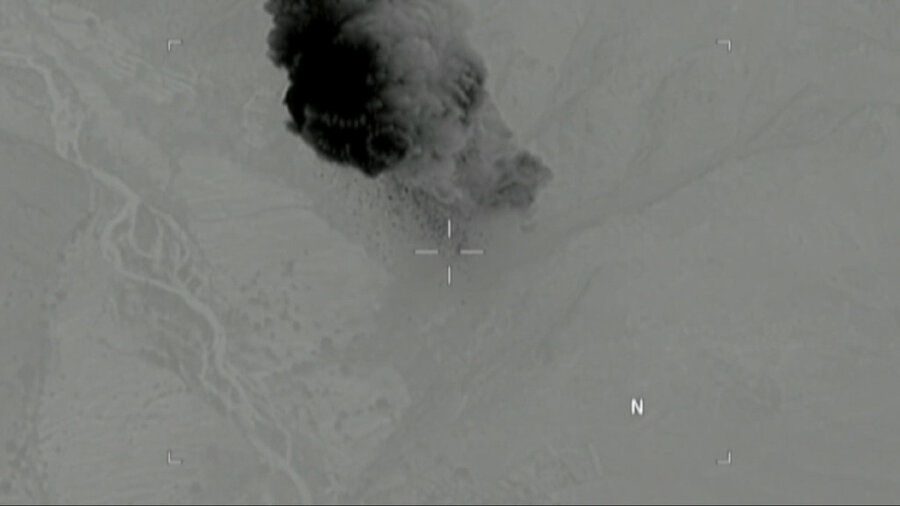ISIS fighters, but no civilians, killed in Afghanistan bombing
Loading...
| Kabul, Afghanistan
The attack on a tunnel complex in remote eastern Afghanistan with the largest non-nuclear weapon ever used in combat by the US military left 36 Islamic State group fighters dead and no civilian casualties, Afghanistan officials said Friday.
The attack was carried out in a remote mountainous area of Nangarhar province near the Pakistan border where there had been heavy fighting in recent weeks between Afghan forces and ISIS militants. The Ministry of Defense said in a statement that several ISIS caves and ammunition caches were destroyed by the giant bomb, which terrified villagers on both sides of the Afghanistan-Pakistan border with its "earsplitting blast."
"This is the right weapon for the right target," said US Gen. John W. Nicholson, NATO commander in Afghanistan, at a news conference.
The bomb, known officially as a GBU-43B, or massive ordnance air blast weapon, unleashes 11 tons of explosives.
Gen. Daulat Waziri, spokesman for the Afghanistan Ministry of Defense, said the death toll of ISIS fighters could rise. He said the bombing was necessary because the tunnel complex was extremely hard to penetrate, with some as deep as 40 meters (43 yards).
"It was a strong position and four times we had operations (attacking the site) and it was not possible to advance," he said, adding that the road leading to the complex "was full of mines."
Pakistani villagers living near the Afghan border said the explosion was so loud they thought a bomb had been dropped in their village by US warplanes targeting terrorists in Pakistan.
"I was sleeping when we heard a loud explosion. It was an earsplitting blast," said Shah Wali who lives in the village of Goor Gari, 15 kilometers (9 miles) from the border with Nangarhar. "I jumped from my bed and came out of my home to see what has gone wrong in our village."
Mr. Wali said dozens of other villagers also came out of homes and later he went near the border, where he met with other residents. He said he could see smoke in the sky.
The US estimates 600 to 800 ISIS fighters are present in Afghanistan, mostly in Nangarhar. The US has concentrated heavily on combatting them while also supporting Afghan forces battling the Taliban. President Trump called Thursday's operation a "very, very successful mission."
"I want a hundred times more bombings on this group," said Hakim Khan, a resident of Achin district, the site of the blast.
Inamullah Meyakhil, spokesman for the central hospital in eastern Nangarhar province, said the facility had received no dead or wounded from the attack.
District Gov. Ismail Shinwari said there is no civilian property near the airstrike location.
There was no immediate comment from the Islamic State group on the attack.
The Site Intelligence Group, which tracks extremist organizations, reported Friday on a statement from the Afghan Taliban condemning the US for its "terrorist" attack. The statement said it is the responsibility of Afghans to remove the Islamic State group from the country not the US.







